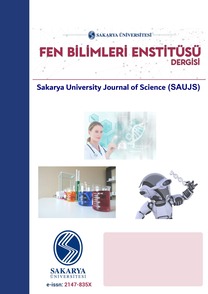Analysis of Silicon Solar Cell Device Parameters using PC1D
___
[1] Basic Photovoltaic Principles and Methods, Solar Information Module (1982), SERI/SP-290-1448.[2] S. Philipps, Photovoltaics Report, Fraunhofer ISE and Werner Warmuth, PSE AG, https://www.ise.fraunhofer.de/content/dam /ise/de/documents/publications/studies/Pho tovoltaicsReport.pdf
[3] M. A. Green, Y. Hishikawa, W. Warta, E. D. Dunlop, D. H. Levi, J. Hohl-Ebinger and A. W. H. Ho-Baillie, “Solar Cell Efficiency Tables (version 50)”, Prog. Photovoltaics, vol. 25, pp. 668- 676, 2017.
[4] K. Yoshikawa, H. Kawasaki, W. Yoshida, T. Irie, K. Konishi, K. Nakano, T. Uto, D. Adachi, M. Kanematsu, H. Uzu and K. Yamamoto, “Silicon heterojunction solar cell with interdigitated back contacts for a photoconversion efficiency over 26%,” Nat. Energy, vol. 2, no. 5, 2017.
[5] J. Benick, A. Richter, R. Müller, H. Hauser, F. Feldmann, P. Krenckel, S. Riepe, F. Schindler, M. C. Schubert, M. Hermle, A. W. Bett and S. W. Glunz “High-Efficiency n-Type HP mc Silicon Solar Cells,” IEEE J. Photovoltaics, vol. 7, no. 5, pp.1171– 1175,2017.
[6] J. Hofstetter, C. del Cafiizo, S. PonceAlcantara and A. Luque, “Optimisation of SiNx:H anti-reflection coatings for silicon solar cells”, Spanish Conference on Electron Devices, pp.131-134,2007.
[7] K. Islam, A. Alnuaimi, H. Ally and A. Nayfeh, “ITO, Si3N4 and ZnO:Al Simulation of Different Anti-reflection Coatings (ARC) for Thin Film a-Si:H Solar Cells,” 2013 European Modelling Symposium, Manchester, pp. 673-676, 2013.
[8] D. A. Clugston and P. A. Basore, “PC1D Version 5- 32-Bit Solar Cell Modeling on Personal Computers”, 26th IEEE Photovoltaics Specialist Conference, Anaheim California, pp. 207–210, 1997.
[9] Synopsis, “Synopsys TCAD Now Offers Atomic-level Accuracy.” Online Available: https://news.synopsys.com/index.php?s=20 295&item=122584. (Accessed: 23-Nov2018).
[10] S. Sepeai, M.Y. Sulaiman, M. Khairunaz, A.W. Azhari, K. Sopian, S.H. Zaidi, “Design Optimization of Bifacial Solar Cell by PC1D Simulation,” Journal of Energy Technologies and Policy, vol. 3, no. 5, pp. 1–11, 2013.
[11] S. Meenakshi and S. Baskar, "Design of multi-junction solar cells using PC1D," 2013 International Conference on Energy Efficient Technologies for Sustainability, Nagercoil, 2013, pp. 443-449.
[12] M. Belarbi, A. Benyoucef, and B. Benyoucef, “Simulation of the solar cells with PC1D, application to cells based on silicon,” Advanced Energy: An International Journal, vol. 1, no.3, 2014.
[13] J. Chuan, L. Tianze, Z. Xia, H. Luan, “Simulation of Silicon Solar Cell using PC1D”, Advanced Materials Research, Vols. 383-390, pp 7032-7036, 2012.
[14] B. Liu, S. Zhong, J. Liu, Y. Xia and C. Li, “Silicon nitride film by inline PECVD for black silicon solar cells,” International Journal of Photoenergy, vol. 2012, pp. 2–7, 2012.
[15] C.-T. Sah, K.A. Yamakawa, R. Lutwack, “Effects of Thickness on Silicon Solar Cell Efficiency”, IEEE Transactions on Electron Devices, vol. 29, no. 5, 1982.
[16] A. Mandong, “Design and Simulation of Single, Double, and Multi-Layer Antireflection Coating for Crystalline Silicon Solar Cell”, Master Thesis, Karadeniz Technical University, Trabzon,Turkey,2019.
[17] M. Wolf, “The Influence of Heavy Doping Effects on Silicon Solar Cell Performance”, Solar Cells, vol. 17, pp. 53- 63, 2018.
[18] R.R. King, K.W. Mitchell and J.M. Gee, “Back Surface Cell Structures for Reducing Recombination in CZ Silicon Solar Cells”, Proceedings of 1994 IEEE 1st World Conference on Photovoltaic Energy Conversion - WCPEC (A Joint Conference of PVSC, PVSEC and PSEC), Waikoloa, USA, 1994.
- ISSN: 1301-4048
- Yayın Aralığı: 6
- Başlangıç: 1997
- Yayıncı: Sakarya Üniversitesi Fen Bilimleri Enstitüsü
Intelligent Campus Implementation For Smart Cities
Muhammet Raşit CESUR, Orhan TORKUL, İsmail Hakkı CEDİMOĞLU, Sedat UÇAR
Gamma Dose Measurements in the Beach Sands of Tatvan, Ahlat and Adilcevaz
Şule KARATEPE, Muhammed Fatih KULUÖZTÜRK
Characterization of Functionally Graded Bronze Matrix Ceramic Reinforced Composite Materials
Serkan ISLAK, Aimen Mohamed ABUSHRAIDA
Serdar ULUBEYLİ, Oğuzhan KAZANCI, Aynur KAZAZ, Volkan ARSLAN
Muslum YİLDİZ, Abdülkadir KOÇAK
Analysis of Silicon Solar Cell Device Parameters using PC1D
Al Montazer MANDONG, Abdullah ÜZÜM
On the axial crush performance of PVC foam-filled aluminum/CFRP hybrid circular tube
Muhammet Muaz YALÇIN, Kenan GENEL
Designing and Interpreting a Mathematical Programming Language
